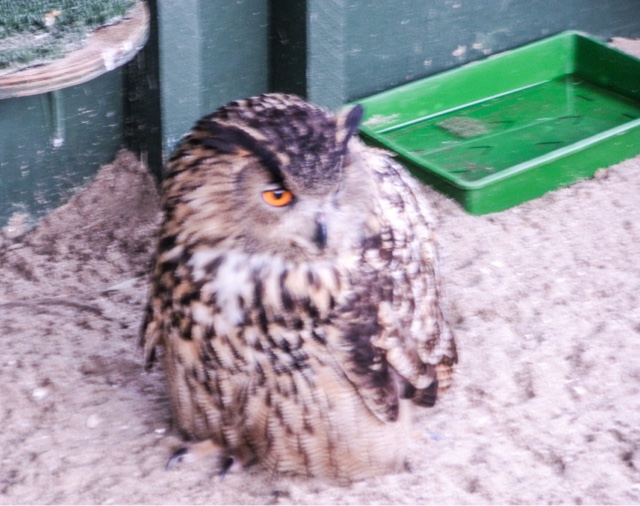The next to realise the strategic importance of the fort were the Normans, who raised it again. The Norman Lord of Gloucester, Robert Fitzhamon, became the Lord of Glamorgan and built a "motte" or mound 40ft high at the keep. The keep built by the Normans was wood and gave shelter to outbuildings that housed the Lord and his garrison.
When Robert Fitzhamon was killed in battle his daughter Mabel married Robert, the son of King Henry I of England. Robert, the new Lord of Glamorgan built the stone keep of Cardiff Castle. The castle and the Lordship passed through several generations until in 1217 it was handed to Gilbert de Clare, the son of Robert's daughter Amicia. Gilbert de Clare's grandson Gilbert de Clare "The Red" reconstructed the defences of the castle. He installed permanent lodgings for his Knights of Glamorgan.
Gilbert de Clare "The Red's" grandson fell in battle and Cardiff Castle fell into Royal Custody. When Gilbert's sister Eleanor was awarded the Lordship she married Hugh Despenser in 1306. The Despensers retained the Lordship for almost one hundred years. Isabella, the estranged wife of King Edward II attacked the Despensers. They were captured just near Cardiff Castle, Edward Despenser was murdered and his brother Hugh, Eleanor's husband, was hanged.
The Welsh Rebellion of Owain Glyndwr saw Cardiff Castle set alight. Following the rebellion, the heir to the Castle and Lordship, Isabel Despenser married Richard Beauchamp of Warwick, after the death of her first husband. He was responsible for new constructions on the castle. Richard's wealth passed to his sister Anne who married Richard Neville, Earl of Warwick and the man later known as "Warwick the Kingmaker". When he was killed in battle his youngest daughter Anne and her husband Richard, later to become King Richard III, took over the castle. When Richard ascended the throne he sent his agent James Tyrell, notoriously linked to the murder of the two young Princes in the Tower, to become Constable of Cardiff Castle .
In 1485 Henry Tudor, head of the House of Lancaster, killed and defeated Richard III and gave Cardiff Castle to his cousin Jasper Tudor. When Jasper died Cardiff Castle fell under the crown and remained that way through the reign of Henry VII and Henry VIII. In 1551 Cardiff Castle was given to William Herbert. Williams sons went on to extend Cardiff Castle, modernising it.
In 1776 Glamorgan Lands and Cardiff Castle were awarded to the Butes through marriage. The Bute family were instrumental in bringing power and wealth to Wales. It was during their reign in Cardiff Castle that the castle was transformed into a Neo-Gothic Fantasy Castle. During the 1770s much was done to transform the landscape of the gardens. Trees were removed, ivy was chopped from the tower and the moat was filled in. The lodgings that had once served the Norman Knights of Glamorgan were removed. The north and south walls were rebuilt and the Roman ruins were rediscovered.
In 1814 the Bute family developed the estates interests in industries and shipping.
In 1865 the then Marquess of Bute, John Crichton-Stuart, hired the architect William Burges. Burges, an English architect and designer was an advocate of the tradition of Gothic Revival and echoed, in his works, the artwork of the Pre-Raphaelites. Lord Bute hired the best historians and artisans of the time to carry out the renovations of Cardiff Castle. Stonework was restored, a covered parapet was built and a clocktower was constructed on the site of the Roman fort. Two original towers were restored and two new ones were added. A library and a banqueting hall were created. The castle was filled with murals and stained glass, as well as elaborate wood carvings.
In 1947 Cardiff Castle was given to the people of Wales by the then Marquess of Bute.
As can be imagined with such an ancient site, having been witness's to so much history, there have been many reports of hauntings. Most of the paranormal activity that occurs at Cardiff Castle happens in the south-west corner of the castle grounds. It is said that the ghost of John Crichton-Stuart, the Second Marquess of Bute, has been seen wandering in the library of the castle, He died in a small chapel near the library and has been seen in a long red coat walking through a fireplace back into the chapel.
A female ghost, which could be that of Sophia Rawdon-Hastings, the wife of the second Marquess of Bute, wanders the castle grounds at night. The stockroom of the castle has been the site of unexplainable events. Objects move on their own, and a mist like figure has been seen in the room.
The large heavy doors of the Dining Room open and close at precisely 3.45am on their own, lights also flicker on and off and occasionally furniture moves on its own in this room.
For many years there has been a belief that the castle is haunted by a spectral horse and carriage. It was sighted as recently as 1950 and at times it can still be heard in the castle grounds. This ghostly vehicle and horse make their way along Cowbridge Road East to the gates of Cardiff Castle.
I enjoyed my visit to Cardiff Castle. It was a beautiful Castle, with a fabulous landscape within its bastion walls. My fondest memory is the Castle Falconry which housed the most gorgeous birds including my favourite, owls ! Cardiff Castle is well worth an explore.




















No comments:
Post a Comment